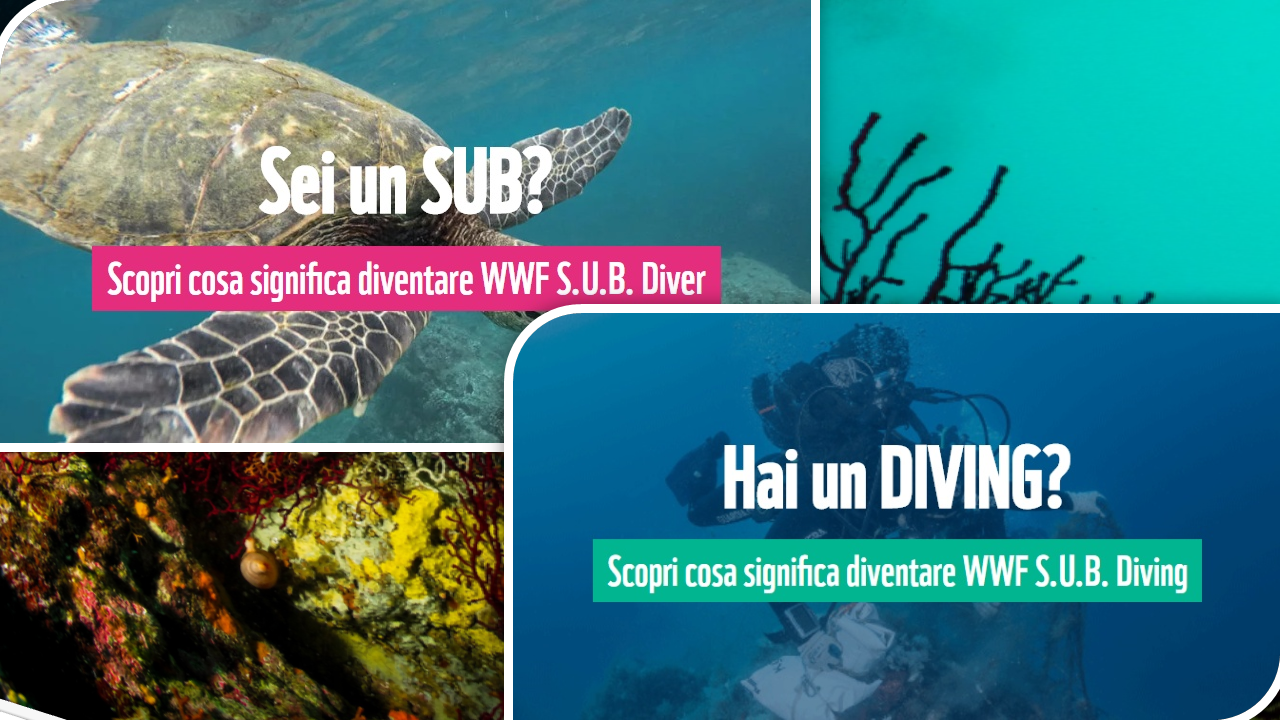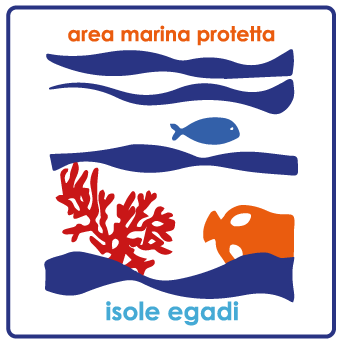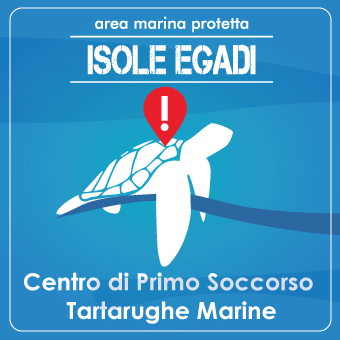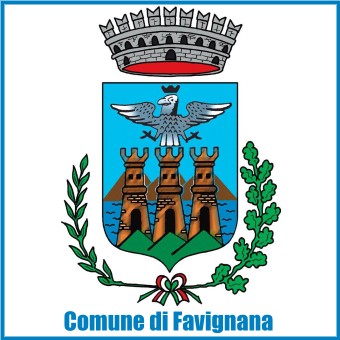Marettimo, the different.
(by Fulco Pratesi – President WWF Italy)
For who, boat, leave Trapani and the mount of Erice crowned with clouds and is channeled towards the west, the first two of the Aegean archipelago islands do not constitute a novelty. The landscapes of Sicily will in fact find themselves a bit 'all: the red rocks of compact limestone, the park bassa (typical plant formation dryland essentially formed by bushy entities such as rosemary, timo, elicriso, cyst, etc) which slopes in the steppe, prickly pears, i pini d’Aleppo, the plaster houses of Havana, traps endangered. Levanzo e Favignana, at bottom, are not that appendices, wonderful if we, of that territory criminally underrated, but very valuable from an ecological and tourist point of view, that, with its epicenter Trapani, It includes real gems such as the Lagoon of Marsala, Capo San Vito to the Zingaro nature reserve, Mount Hood and the fabulous Erice.
The third island, Marettimo, It is instead different. Different in the truest sense (and more positive) the word. Diverse, and to, are all islands, but those really "different" are not many in our seas: among these I would place Gallinara, Montecristo, Palmarola, Capri, break, San Domino, Salina, Vivara, islands "with a plus", just to take a shabby compared motorsport.
The islands "different" also understand from a distance: Savage profile and moved, the vast patches of vegetation, the impervious walls and precipitating, low (Apart Capri, jewel unreachable) human attendance, source of indecency and obscenity.
From the sea, Marettimo (such as marine and insular name of this?) already he tells us many things: its highest peak, Mount Falcone, nearly 700 meters, all its buildings (but right across!) thickened and coagulated in a small village of low houses and compound, Usually the desert sand color, its "skin" rock covered by a green and thick fleece, especially in the northern sector.
An island far away, Marettimo, elusiva, surly, beautiful, for hundreds of thousands of years was not, as was Levanzo and Favignana, united to Sicily, but separate, in splendid isolation. An isolation, Luckily, still resists: a Marettimo, with satisfaction of the inhabitants, not downloaded the tourism intrusive and degrading as sleeping bags and syringes, and even that, equally unacceptable, of subdivisions and megalberghi. Marettimo tourism is, sensitive and calm, Rooms for rent at fishermen, two small (and wonderful) restaurants, a minute and peaceful relationship between "foreigners" and local, in an atmosphere of yesterday, but it could also be that of tomorrow made of harmony with nature, with the people, with the place. I do not know how to present Marettimo spring, but I'm sure any season of autumn can give more complete idea of the magnificence. in the meantime, in early September the tourists are gone and the coasts are clear of boats and rafts.
Then, What few people know, the first rains burst the blooms of the Mediterranean scrub and steppe: the gravel roads are opened purple corolla of magical mandrake, evergreen bush is cloaked the sky-blue flowers of rosemary and those deep pink heather, on tree euphorbia open blue-green tufts of new leaves. And it's now (and not in the short and arid Sicilian spring) that bloom endemic: red rock carnation carmine, the Bupleurum fruticosum with carnation leaves, the autumn squill, Gromwell in rosemary leaves from the corolla blue gentian (But that bloom in winter), the statice tenuicola by purple flowers and many other.
Finally, and it is not a particular underestimate, autumn skies Marettimo infoltiscono wings and flights: pass on its peaks and its spots many birds of prey that have nested in northern Europe and returning to the south for the winter. In just two days of observation, in September, I have noticed six Egyptian vultures (small and far between whites and blacks vultures), three hawks and other birds of prey that have failed to recognize.
To get an idea of effective Marettimo is essential travel at least two routes: one boat and one walk.
The boat, one of the typical colorful and noisy local motorboats, of typically from Scalo Nuovo, in the eastern part of the island, dock where steamers and hydrofoils (the other port of Marettimo, the Scalo Vecchio, It turned instead to the west). We sail north, a few hundred meters from the shore, which allows the well to observe the peculiarities of the landscape. Up to the rock of the Camel, just west of the port, It characterized by two humps stony and erect, the coast is beautiful, but not outstanding: large boulders, pebbly coves, a large cave (the cave of the Camel, just) full of nooks and openings.
This is the first of an incredible series of cavities placed at the water surface and which follow each other along almost the entire perimeter of the island that develops for nineteen kilometers. What attracts the naturalist is here, more than the play of lights on the walls and stalactites, the delicate orange flowering of a unique esacorallo, l’Astroides calycularis, that illuminates the closest to the surface rock. It may be interesting to know that it was in this cave that were brutally killed and shot the last monk seals in this part of the Mediterranean.
A little farther on there boat passes under a high and precipitous promontory, on top of which stands a small castle: it is the strongest of Bourbon Punta Troia, in whose secret languished the Neapolitan patriot Guglielmo Pepe. Sull'altissimo needle rock that is located just off nested until a few years ago the legendary Osprey. Below it another cave, this part Thunder, and just ahead of the cave Pipe. In all cases, do not try to remember the names: each boatman will be happy to tell you about it.
Turn the tip Troy, the landscape becomes more beautiful: rocciosiche the peaks pierce the sky are covered at the bottom by a thick Mediterranean, which continues without interruption until the sea. The boat now exceeds tip Mugnone, low and rocky, on which there are still the remains of a marble quarry, to head, always following, south.
The view that opens from White drops a tip Libeccio, virtually the western section of the island that looks to Africa, and the surprise factor. In slopes covered with scrub is replaced at this point a real cathedral of stone towers made of dolomite whose feet, pierced by caves, They are immersed in a sea in which the limestone gravel seabed gives a wonderful color of the turquoise barranche (with the name of Spanish origin called the steep gorges that affect the coast between the stone towers) separating promontory overlooking deep as four meters, pink and warm, They stand out against the blue sky: It is like watching the Three Peaks which is upraising in the sea, with all the solar warmth of dolomite at sunset, the cliffs, le Center, the layers of ancient eras.
the cave, needless to say, they're really beautiful: the Perciata, that of Crib, that of bombard I have a more charming than the, rich resonances and ravines, foramina and galleries, stalactites and stalagmites, in certain light conditions, they appear characters and images, as the praying Madonna short time ago discovered in the cave of the Nativity.
Try to immerse yourself in a cave, for example that of Bombarda: to blue-violet shade of the seabed is matched by the flourishing of astroidi. In the bottom, white and strewn with boulders, marine life is rare (there are too many fishermen), but you will notice a high density of beautiful damsels pavonine, green tropical fish, red and blue, here the fishermen call "violets".
From Punta Libeccio the chorus of peaks and barranche subsides and the coast becomes steeper up to tip Bassana, that rears back to the south-east. Then, After two hours of sailing, It returns to the country.
Walking impressions are all different.
First of all because the one thousand two hundred hectares of Marettimo area are passable only in a few spots and still recommended for those who do not fear to cross a low scrub but tenacious and stay balanced on slender spikes of rock. Then, because the sea water is replaced by a sea of shrubs, compact and aromatic, absorbing all the attention. Finally because barranche and precipices, seen from above, They make an entirely different impression.
The path we suggest partly behind the last houses and, crossed a grove of pines, It reaches a first plateau above the town, where there are interesting ruins of the classical age (the place is said of Romanian Case) and a small chapel of the twelfth or thirteenth century in a state of serious neglect. From here it departs a path perpendicular to the coast, through valleys and scrubland, He arrives with difficulty at the pace of Capraro, from which good and go up to Mount Falcone.
It should stand on the mountain to fill the eyes and brain of a beautiful landscape, made of rocks and greenery in which, greatest benefit, there is no human trace: or pylons, or homes, or roads, nor TV repeaters, or shelters, or pens. Only daffodils and stones, rabbits and wild peregrine falcons, euphorbia and wind. In the thicket that accompanies the ridges to the north, in which they sprout large holm oak bushes, live some wild sheep, many pigs incinghialiti (that disrupt the soil in search of dell'arisaro bulbs and romulee) and many wild rabbits. On the cliffs stand out clumps of rare plants and is heard in the sky flying hissing of peregrine falcons. the will, returning to the country, You meet local hunters looking for wild rabbits.
The tutelary deity of the island (and to his knowledge is an obligation) Jerome's father Field, a priest who has understood everything: of life, of nature, tourism, man. It was he, the strong cohesion of marettimani and Ente Provincial vision for tourism if Marettimo has remained so, of true civilization island in a country that collapses overwhelmed dall'imbarbarimento and false values.
Fulco Pratesi, published on Atlas, May 1985
n.d.r. I wanted to post this full story Fulco Pratesi because thank God Marettimo remained as then. When I read it I 21 years and I discovered Marettimo in 52 ! Thanks Fulvio, founder of the only true environmental organization in the world, WWF of which I am proudly part.































